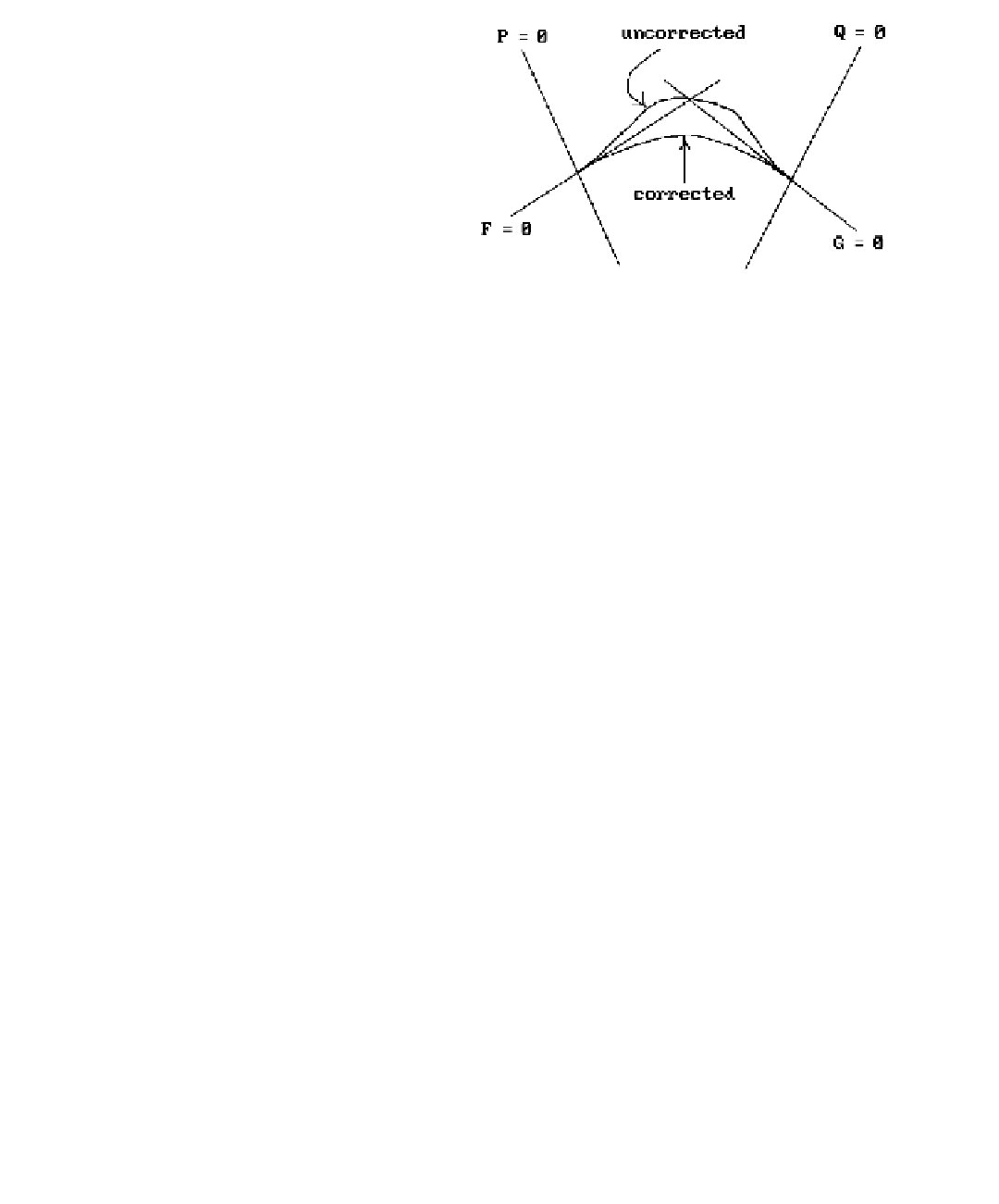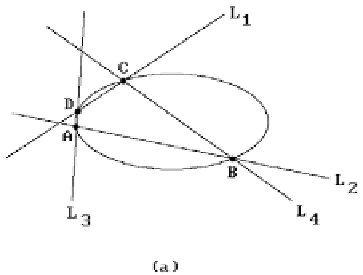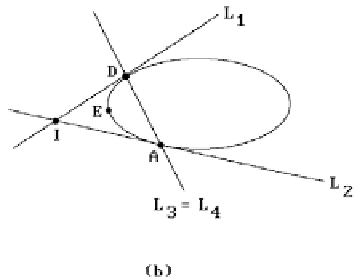Graphics Reference
In-Depth Information
Figure 15.16.
Volume-bounded blends.
Figure 15.17.
Blending with conics.
defines a family of conics which starts with F = 0 and ends with G = 0 as t ranges
from 0 to 1. We can apply this to the degenerate conics
(
)
(
)
F axbycaxbyc
=++
++
1
1
1
2
2
2
and
(
)
(
)
G axbyc axbyc
=
+
+
++
4
,
3
3
3
4
4
which correspond to two pairs of lines
L
1
,
L
2
and
L
3
,
L
4
, respectively. Then the family
of conics defined by equation (15.14) passes through the four intersection points
A
,
B
,
C
, and
D
of the lines. See Figure 15.17(a). If we let
C
approach
D
and
B
approach
A
, that is, we let the lines
L
3
and
L
4
move toward each other, then we shall find that
in the limit when
L
3
=
L
4
, the lines
L
1
and
L
2
will be tangent to the conics defined by
(15.14) at
C
=
D
and
B
=
A
, respectively. See Figure 15.17(b). The conic is uniquely
specified by the two points of tangency
A
and
D
, the intersection point
I
, and one
other point
F
, which also determines t. This construction obviously gives us blends
between two lines in the plane. Furthermore, it extends to 3-space and can be used
to find cylindrical and conical blends between two planes.



